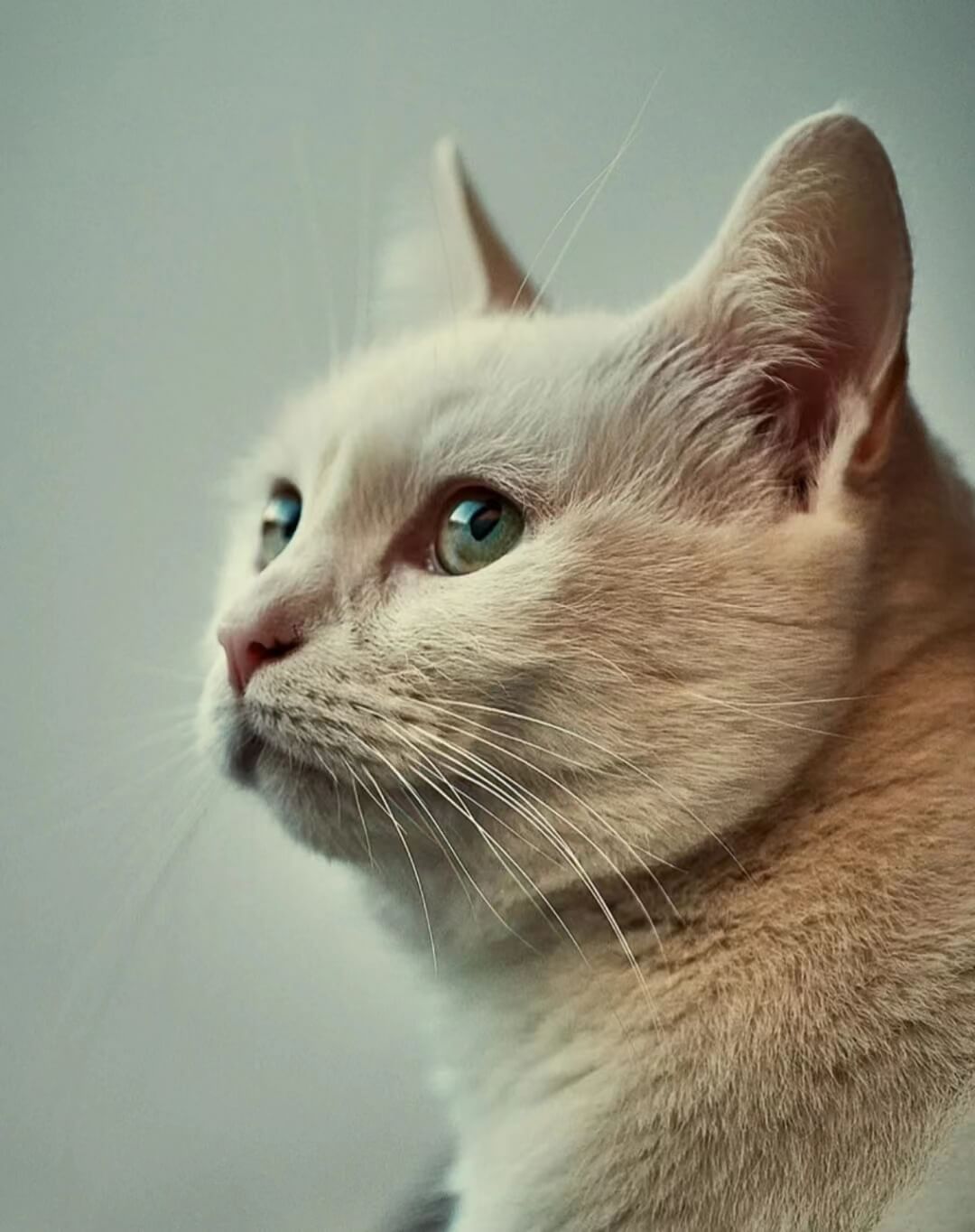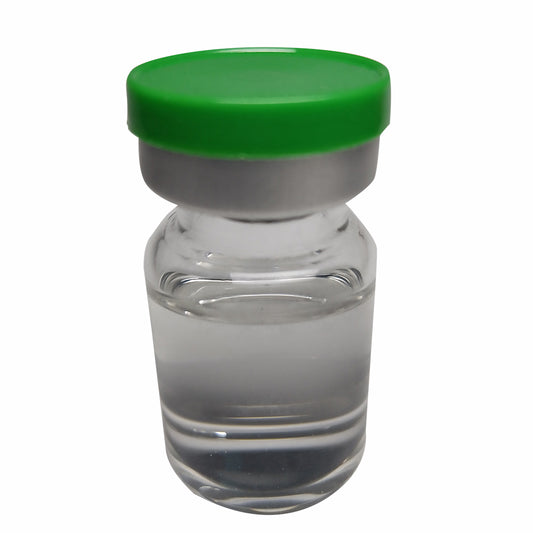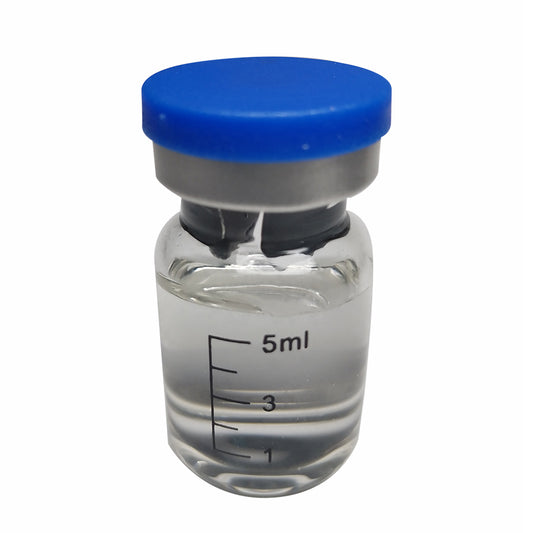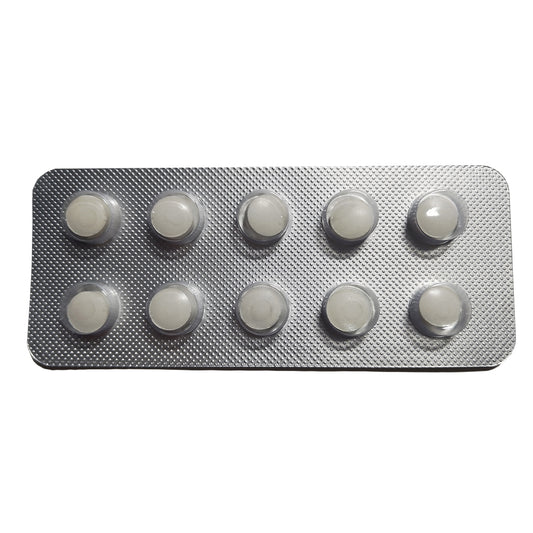FEATURED PRODUCTS
GS441524【15mg/ml,20mg/ml】
- FormulaChemical: C12H13N5O4
- Product Band:CNL
- Concentration: 15mg/ml,20mg/ml
- Volume: 5.5ml per vial
- Quantity: 1vial,5vials,10vials
- Purity: ≥ 99.8%
- Shelf Life: ≥ 3 years when stored at temperatures between 3-9º Celsius.
Usage:
Dosage is based on weight and symptoms, it should be administrated at least 12 weeks;
- Wet FIP: 6 mg/kg per 24 hours, severe and advanced wet FIP starts with 7-8 mg/kg;
- Dry FIP: 7 mg /kg per 24 hours, severe and advanced dry FIP starts with 8-9 mg/kg;
- Ocular FIP: 8 mg/kg per 24 hours, severe and advanced dry FIP starts with 10 mg/kg;
- Neuro FIP: 10 mg/kg per 24 hours, severe and advanced Neuro FIP starts with 12 mg/kg;
Application:
Feline infectious peritonitis, loss of appetite, recurrent fever, jaundice, diarrhea, swollen lymph nodes, certain moist cat abdominal symptoms of pleural and ascites exudation, post-driving weakness, iris disease, and other certain dry Fatigue caused by cats.
Inhibitors:
RNA viruses such as feline coronavirus cause feline infectious peritonitis.
Treatment mechanism:
Focus on the Feline Infectious Peritonitis of cats, it can inhibit the gene replication of cat coronavirus and hinder the virus reproduction.
-
GS-441524,1 Vial【5.5ml:15mg/ml】
Regular price $48.00 USDRegular priceUnit price per -
GS-441524,10 Vials【5.5ml:20mg/ml】
Regular price $470.00 USDRegular priceUnit price per$600.00 USDSale price $470.00 USDSale -
GS-441524,10 Vials【5.5ml:15mg/ml】
Regular price $360.00 USDRegular priceUnit price per$480.00 USDSale price $360.00 USDSale -
GS-441524 Oral Tablet,50mg/Tablet,50 Tablets/Pack
Regular price $399.50 USDRegular priceUnit price per$500.00 USDSale price $399.50 USDSale
HOW TO INJECT A FIP CAT?
FIP FREQUENTLY ASKED QUESTIONS
What's Feline Infectious Peritonitis(FIP)? Can FIP be cured?
Feline infectious peritonitis (FIP) is a viral disease that caused by a type of virus called coronavirus, which tends to attack the cells of the intestinal wall.FIP usually occurs in young cats (0-2 years old) and older cats. About 70% of the cats show in a effusive (wet) form and 30% of them show in a non-effusive (dry) form.FIP was fatal in more than 95 percent of cases. In mild cases of the dry form, it may be possible to prolong the survival period, but most cats with the wet form of the disease die within two months of the onset of signs.
The Great Dr. Niels Pedersen & GS441524 :
Fortunately, As of February 2019,Dr. Niels Pedersen and his team of researchers, the discovery of the use of GS441524 has revolutionised FIP treatment,FIP is no more fatal! GS441524 has effectively cured wet FIP, dry FIP, ocular and neurological FIP.With the discovery of GS441524, the treatment of FIP has made revolutionary progress, increasing the FIP treatment of nearly 0 survival rates to more than 85%. If there is a Nobel Prize in the field of veterinarian medical care, it must be Dr. Niels Pedersen and his team.Thank you Dr. Pedersen and his team for everything for the Cat World! Long live the Great Dr. Niels Pedersen !!!
GS441524' Form for FIP Treatment:
GS441524 comes in both oral and injectable form. The treatment protocol calls for 12 weeks of daily administration of the drug. Most cats see significant improvement of physical symptoms within the first 1-3 days, but require the full course of treatment to fully eradicate the virus.
Is My Cat at Risk for Developing FIP?
Any cat that carries FeCV is potentially at risk for developing FIP, but younger cats are at greater risk of developing FIP, with approximately 70% of cases diagnosed in cats less than 1 1/2 years of age and 50% of cases occurring in cats less than 7 months of age. The most common mode of transmission of FeCV is believed to occur when infected queens pass along the virus to their kittens, usually when the kittens are between five and eight weeks of age. Cats that are housed in high-density facilities (i.e. shelters, catteries) appear to be more susceptible to the development of FIP, as are pure bred cats, male cats, and geriatric cats, for reasons that remain unclear.
What Are the Symptoms of FIP?
Cats that have been initially exposed to FeCV usually show no obvious symptoms. Some cats may show mild upper respiratory symptoms such as sneezing, watery eyes, and nasal discharge, while others may experience mild gastrointestinal signs such as diarrhea. In most cases, these mild signs are self-limiting. Only a small percentage of cats that are exposed to the FeCV develop FIP, and this can occur weeks, months, or even years after initial exposure to FeCV.There are two main forms of FIP: effusive (wet) and non-effusive (dry). While both types are fatal, the effusive form is more common (60–70% of all cases are wet) and progresses more rapidly than the non-effusive form.Effusive (wet) FIPThe hallmark clinical sign of effusive FIP is the accumulation of fluid within the abdomen or chest, which can cause breathing difficulties. Other symptoms include lack of appetite, fever, weight loss, jaundice, and diarrhea.Non-Effusive (dry) FIPDry FIP will also present with lack of appetite, fever, jaundice, diarrhea, and weight loss, but there will not be an accumulation of fluid. Typically a cat with dry FIP will show ocular or neurologicial signs including seizures and ataxia (abnormal or uncoordinated movements). For example, the cat may develop difficulty in standing up or walking, becoming functionally paralyzed over time. Loss of vision is another possible outcome of the disease.
How Is FIP Diagnosed?
Diagnosing FIP is challenging. Unfortunately, there is currently no definitive test to diagnose FIP. While antibody levels, or titers, to coronavirus can be measured, they cannot definitively distinguish between exposure to FeCV and FIPV.
Diagnosing effusive FIP
Diagnosis of effusive FIP has become more straightforward in recent years: detection of viral RNA in a sample of the effusion, by reverse-transcriptase polymerase chain reaction (RT-PCR) is diagnostic of effusive FIP. However, that does require that a sample be sent to an external veterinary laboratory. Within the veterinary hospital there are a number of tests which can rule out a diagnosis of effusive FIP within minutes:
Measure the total protein in the effusion: if it is less than 35g/l, FIP is extremely unlikely.
Measure the albumin to globulin ratio in the effusion: if it is over 0.8, FIP is ruled out, if it is less than 0.4, FIP is a possible—but not certain—diagnosis.
Examine the cells in the effusion: if they are predominantly lymphocytes then FIP is excluded as a diagnosis.
Collapsible rowDiagnosing non-effusive FIP
Non-effusive FIP is more difficult to diagnose than effusive FIP because the clinical signs tend to be more vague and varied: the list of differential diagnoses is therefore much longer. Non-effusive FIP diagnosis should be considered when the following criteria are met:
History: the cat is young (under 2 years old) and purebred: over 70% of cases of FIP are in pedigree kittens.
History: the cat experienced stress such as recent neutering or vaccination.
History: the cat had an opportunity to become infected with FCoV, such as originating in a breeding or rescue cattery, or the recent introduction of a purebred kitten or cat into the household.
Clinical signs: the cat has become anorexic or is eating less than usual; has lost weight or failed to gain weight; has pyrexia of unknown origin; intra-ocular signs; icterus.
Biochemistry: hypergammaglobulinaemia; raised bilirubin without liver enzymes being raised.
Hematology: lymphopenia; non-regenerative—usually mild—anaemia.
Serology: the cat has a high antibody titre to FCoV: this parameter should be used with caution, because of the high prevalence of FCoV in breeding and rescue catteries.
Non-effusive FIP can be ruled out as a diagnosis if the cat is seronegative, provided the antibody test has excellent sensitivity. In a study which compared various commercially available in-house FCoV antibody tests, the FCoV Immunocomb (Biogal) was 100% sensitive; the Speed F-Corona rapid immuochromatographic (RIM) test (Virbac) was 92.4% sensitive and the FASTest feline infectious peritonitis (MegaCor Diagnostik) RIM test was 84.6% sensitive.
How Is FIP Treated?
Because FIP is an immune-mediated disease, treatment falls into two categories: direct action against the virus itself and modulation of the immune response.
Until recently, FIP was considered to be a non-treatable disease. While there are still some uncertainties regarding the long-term effectiveness of recently-identified antiviral drugs to treat FIP, studies in both the laboratory and in client-owned cats with naturally occurring FIP suggest that a drug currently referred to as GS441524 may ultimately prove to be an effective treatment option for (minimally) the effusive form of FIP. While some cases of the non-effusive form of FIP responded to GS441524 therapy in these trials, the responses in cases with this form of FIP were not as favorable as those seen in cases of the effusive form. This drug is currently not FDA-approved, however, and while there are a number of sources offering it for sale, anecdotal reports suggest that the products being provided by some of these sources vary widely in both accuracy of reported drug concentration and purity. It is very important to discuss the risks, benefits, and evolving acquisition and regulatory issues with your veterinarian if you are considering therapy with GS441524. Supportive care, including fluid therapy, drainage of accumulated fluids, and blood transfusions, is also indicated in some cases.
Can I Protect My Cat from Getting FIP?
The only way to definitively prevent FIP in cats is to prevent FeCV infection, which can be challenging given its ubiquitous nature. This is particularly true of cats that are housed in high density (shelters, catteries), and housing cats at a density at or below three per room is recommended to minimize stresses that can be associated with crowded living conditions. It is important to note that while FeCV is quite contagious (it is passed in the feces and saliva of infected cats and infects other cats primarily via the oral cavity), FIPV is not believed to be. Rather, FIP develops in individual cats after they are infected with FeCV and the virus undergoes mutations to become FIPV (FIPV itself is not passed in the feces). Keeping cats as healthy as possible, including preventing infection by other viruses such as feline leukemia virus and calicivirus by appropriate vaccination, where indicated, is likely to decrease the likelihood of FIP. Litter boxes should be kept clean and located away from food and water dishes. Some sources have suggested that newly acquired cats and any cats that are suspected of being infected with FeCV should be separated from other cats, although the usefulness of this management strategy is debatable.
There is only one licensed FIP vaccine available, but this vaccine has questionable effectiveness in preventing FIP, and it is not routinely recommended by the American Association of Feline Practitioners Feline Vaccine Advisory Panel. The vaccine appears to be safe, but the risks and benefits of vaccination should be weighed carefully. Cat owners should consult their veterinarian to help them decide if their cat should be vaccinated.
HOW TO PILL YOUR CAT?
LET OUR CUSTOMERS SPEAK FOR US
-

Maria Martinez
When I learned that my cat Jack had FIP, he had a fever for 2 days, we tried several organizations until we turned to the website of FIP.health, they not only offer cheaper injections, but also ensure the quality and efficacy, we often turn to their vet and customer service via chat about how to cure FIP cats, much appreciated! We are very grateful for what they have done for our cats and we often recommend their team and their website FIP.health to friends and more parents of FIP cats!
-

Sandy Johnson
At the end of March 2023, my cat Anna was diagnosed with dry transverse abdomen, which was so deep into his nerves that he had trouble walking, and even then I still didn't give up on him, I turned to the team at FIP.health through a friend's recommendation, and luckily we had their 24/7 support, Tom recovered quickly and was walking in a week, and by golly, our efforts God, our efforts became so great, my love for it was saved by the team of FIP.health, thanks to FIP.health, thank you!
-

Gary Kibby
Our cat Ace was diagnosed with FIP by our vet because she was running a fever and not eating. We could not afford the high cost of treatment at the veterinary hospital, so we chose to buy medication for FIP online at the recommendation of a friend. Luckily, we found the website FIP.health and with the guidance of the FIP.health team, we gave Ace at home The FIP.health team's injections and experience saved Ace, and I highly recommend the FIP.health team and injections if your cat has FIP too!









